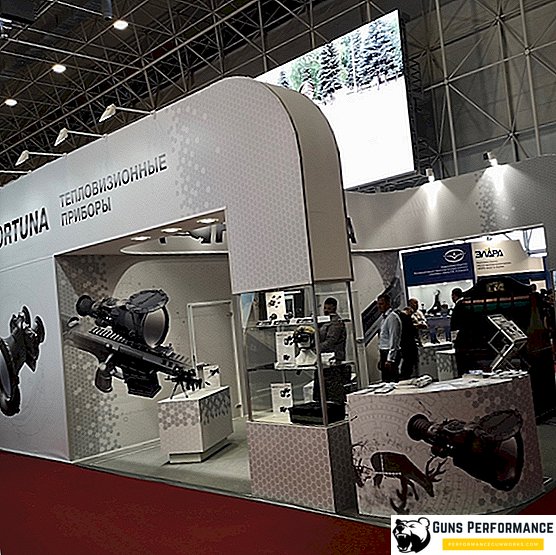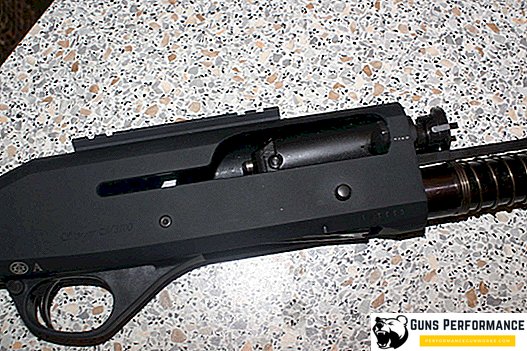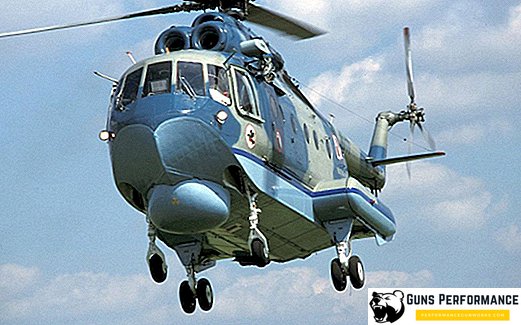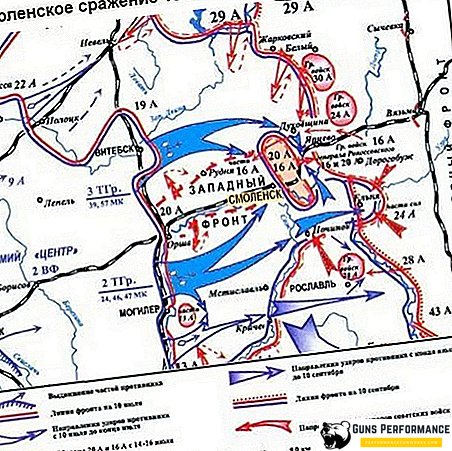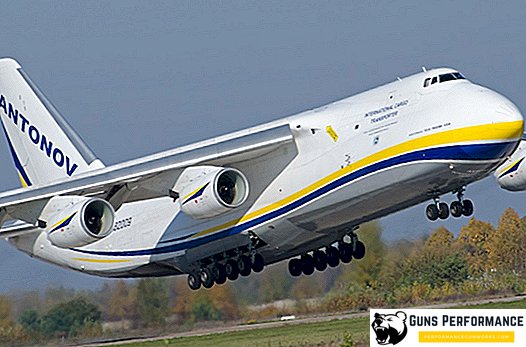
AGS-40 Balkan is a Russian automatic machine-based grenade launcher developed at the Pribor Scientific and Production Association. The caliber of this weapon is 40 mm. It is intended for the destruction of the living unprotected force of the enemy, as well as enemy infantry, located in field shelters or behind the natural folds of the terrain.
Small-scale production of weapons began in 2008. It is planned that this year the AGS-40 Balkan grenade launcher will finally be adopted by the Russian army.
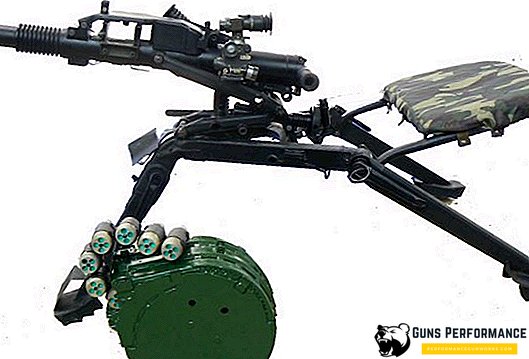
The creators of the AGS-40 were tasked to create a weapon in their power and maximum range that surpasses the AGS-17 “Flame” and AGS-30 automatic grenade launchers. And, judging by the reviews of those who had the opportunity to get acquainted with the new weapon better, the designers coped with this task brilliantly. Due to the increase in caliber up to 40 mm and the use of a new ammunition, the AGS-40, having almost the same weight as its famous predecessor, the AGS-17, has significantly “grown up” in firepower, speed of fire and firing range.
AGS-40 was created on the basis of an experienced 40-mm Kozlik automatic grenade launcher, the development of which was carried out in the 90s of the last century.
History of the creation of the grenade launcher AGS-40 "Balkan"
The Soviet Union can be safely called the birthplace of automatic grenade launchers. Even before the war, domestic weapons designers first in the world engaged in the development of this type of weapon. In 1934, a special design bureau was even created, headed by Yakov Grigorievich Taubin.
A year later, a 40.6-mm automatic grenade launcher was handed over to the military for testing, which could fire at 1.2 thousand meters. The new type of small arms was ambiguously perceived by the military leadership, he had both opponents and supporters. For the sake of justice, it should be noted that the Taubin’s 40.6-mm grenade launcher had serious technical flaws, and the reliability of the weapon was unsatisfactory. Therefore, it was never put into service, and in 1941 Taubin was arrested and shot. The project of an automatic grenade launcher was closed.
Despite the tragic fate of Taubin, his design bureau continued its work. And in the early 70s, his students and followers created the AGS-17 30-mm machine-gun grenade launcher “Flame”. In 1972 he was put into service.
AGS-17 participated in most armed conflicts of the last quarter of the last century. The real war for him was the Afghan war. The weapon turned out so successful that the Soviet soldiers often proactively welded the AGS-17 to the corps of combat vehicles, thus greatly increasing their firepower.
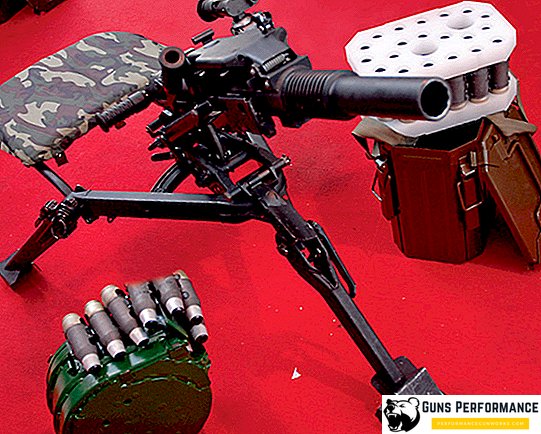
The practical use of AGS-17 showed a number of shortcomings of this grenade launcher, the main one of which was the considerable weight of these weapons. Therefore, already in the 80s, the development of a new automatic grenade launcher, which was later called AGS-30, began in the Design Bureau of Instrument Engineering. Due to objective and subjective reasons, its creation took a long period of time, only in the mid-1990s did it begin to enter the army in limited quantities. The designers did their best job with their main task: if the mass of the AGS-17 with a machine exceeds 30 kg, then the AGS-30 weighs only about 16 kg.
However, the effective damage radius for AGS-30 remains the same as that of its predecessor. And this is not surprising, because the new grenade launcher uses the same ammunition as the AGS-17.
Therefore, in the 80s in Tula TsKIB SOO began work on another project - a more powerful 40-mm automatic grenade launcher. The main objective of this project was the creation of weapons with greater firing range and combat effectiveness compared with the AGS-17 grenade launcher in service at that time. At the development stage, a new 40-mm grenade launcher was named the TKB-0134 “Goat”.
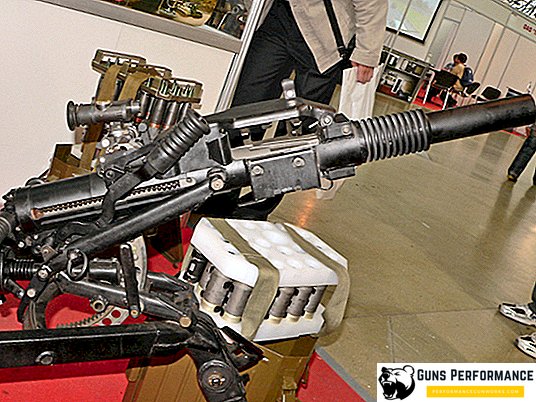
In order to achieve the stated characteristics, gunsmiths used a design of a sleeveless ammunition with a so-called flying sleeve that is non-standard for this type of weapon (it forms a single whole with the grenade body and flies away after the shot). By design, these munitions are very similar to the shots of the VOG-25 grenade launcher, but it is much more powerful than them.
The collapse of the USSR and a decade of economic turmoil did not make it possible to complete this project. But the achievements obtained in the course of its implementation have found application in the construction of the AGS-40 grenade launcher. Work on its creation began in the mid-90s, but due to the difficult economic situation in the country, it was greatly delayed. Only in 2008, Pribor handed over to the Russian armed forces six copies of the new AGS-40 Balkan and a batch of ammunition for testing.
According to the results of the tests, AGS-40 was recommended for use. It is planned that the new grenade launcher will begin to arrive in the army in 2018. This information was confirmed to journalists by representatives of the NGO Pribor. At the same time, the developers believe that AGS-40 is far superior in its main characteristics to the best foreign analogues.
In 2013, AGS-40 was presented at the IDEX-2013 arms exhibition, which was held in the United Arab Emirates. The new Russian grenade launcher has caused unprecedented excitement.
Description of the design of the AGS-40 "Balkan"
One of the main differences of the AGS-40 from its predecessors, which immediately catches the eye, is the presence in the design of the machine-tripod seat for the shooter, which is why the grenade launcher has already been called the “shooting chair”. Sitting not only increases the convenience of the shooter, due to the weight of the fighter, the weapon throws less after a shot.
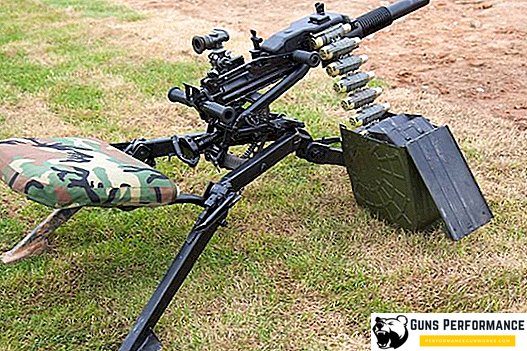
The weight of the AGS-40 grenade launcher together with the machine tool and sighting devices is 32 kg. Another 14 kg weighs a box with grenades. The total weight of the weapon is quite impressive, but the combat characteristics have increased significantly compared with the AGS-17 and AGS-30. The maximum firing range of the grenade launcher is 2.5 thousand meters, and the firing rate is 400 rounds per minute. AGS-40 will be able to fire both on a hinged and on a flat trajectory. Shooting can be conducted with single shots, short bursts (up to 5 shots), long bursts (up to 10 shots), and continuous fire is possible. And that is not all.
It would be more correct to call the AGS-40 a grenade launcher complex, which, in addition to the weapon itself, also includes ammunition - a 7P39 grenade, equipped with a two-chamber ballistic engine. It is he who is the main "highlight" of the AGS-40, which largely determines the characteristics of these weapons.
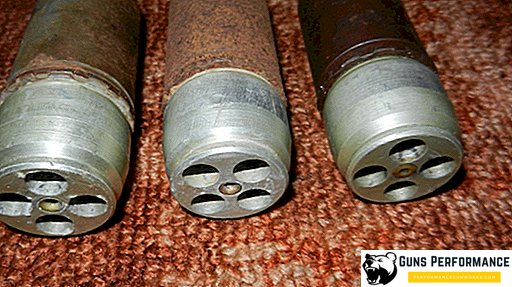
Grenade 7P39 is made according to the so-called mortar scheme, when the chamber with the propelling charge is integral with the body of the ammunition and flies out of the barrel after the shot with it. She does not have a separate sleeve. This made it possible to bring the mass of explosive in garnet to almost 90 grams.
The use of a bezgilzovoy scheme allowed not only to increase the power of ammunition and the firing range of the grenade launcher, but also generally determined the scheme of operation of the automatic grenade launcher.
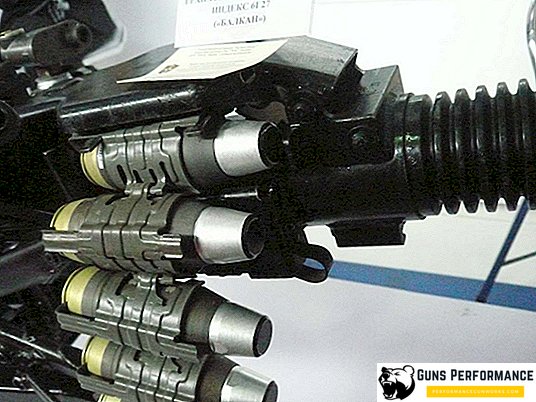
The fire is conducted from the open gate, and the role of the gas piston is played by the drummer, which is rigidly connected to the bolt carrier. After the bolt group returns to the front position, it continues to move on and turns the bolt, locking the barrel bore under the action of a spring. Then the drummer smashes the grenade cap. After the shot, the powder gases press down on the drummer, pushing him along with the slide frame back. The cycle of automation is repeated.
The combat power of the weapon comes from a composite metal tape, with a capacity of twenty shots, which is fed from right to left. The tape fits into a round box that attaches to the grenade launcher on the right side. The troops will be supplied with ribbons already equipped with two ribbons in each transport box. The calculation of the grenade launcher consists of two people.
During use, the AGS-40 is installed on a tripod machine, the design of which in many ways resembles the tripod of the AGS-17 Flame grenade launcher, but has a seat for the shooter on the rear supports.
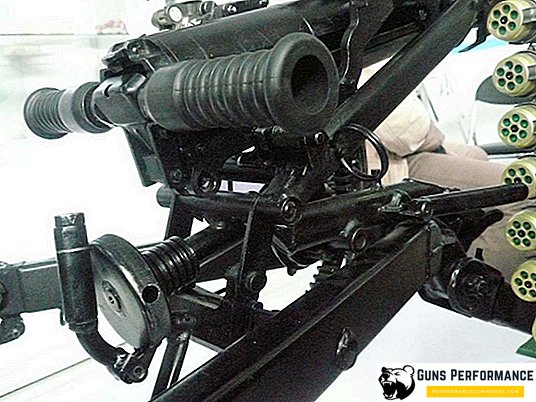
AGS-40 is regularly equipped with a mechanical and optical sight. His gun control knobs are located, like those of AGS-17, directly on the body of the grenade launcher.
The AGS-40 grenade launcher can be installed on various types of military equipment. Given the decent weight of the weapon and its firepower, this can be called the best solution. NPO Pribor has already announced that they are considering options for attaching it to light military equipment, as well as to boats. In addition, the increased firing range and increased ammunition power makes the AGS-40 an excellent weapon for attack helicopters.



